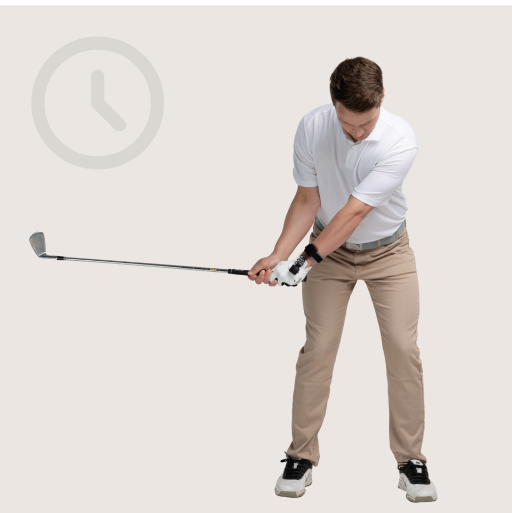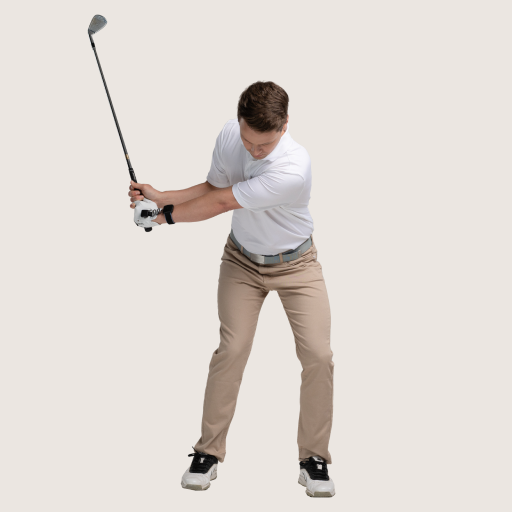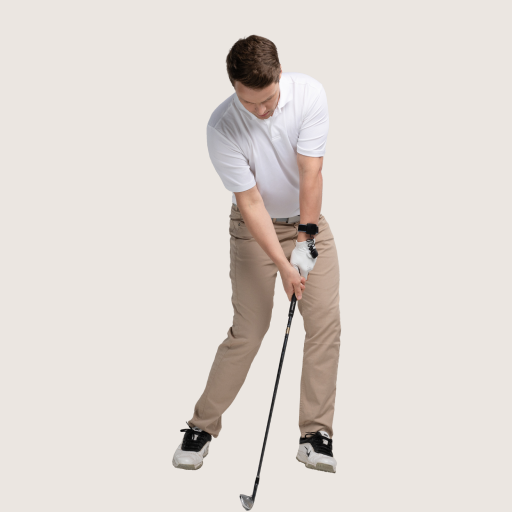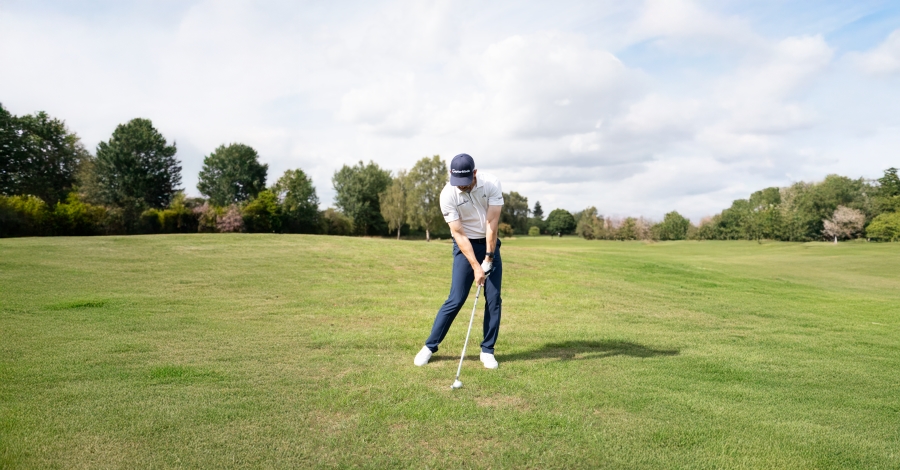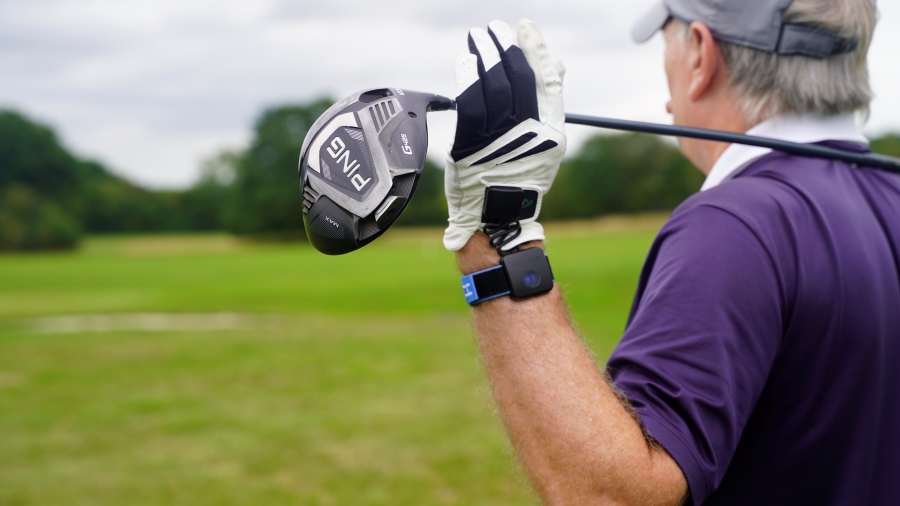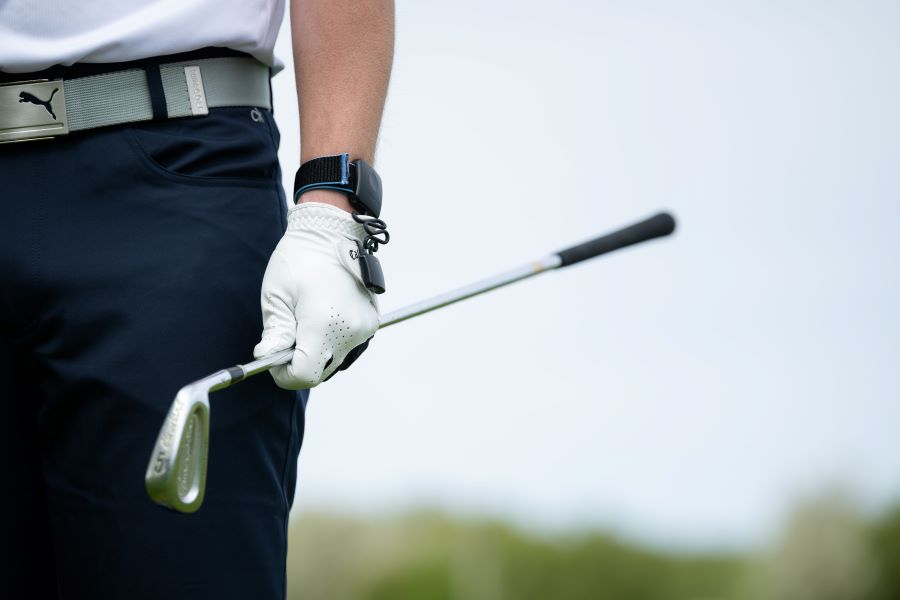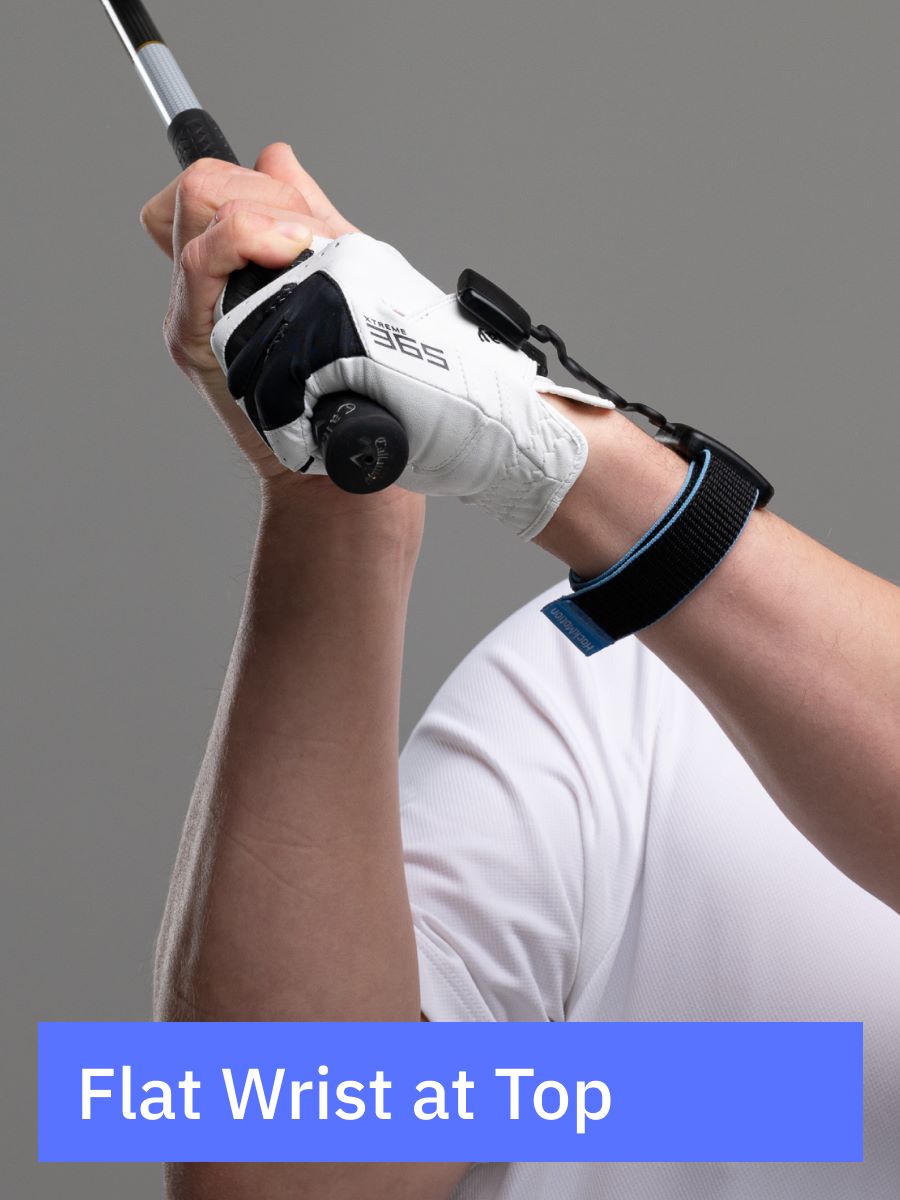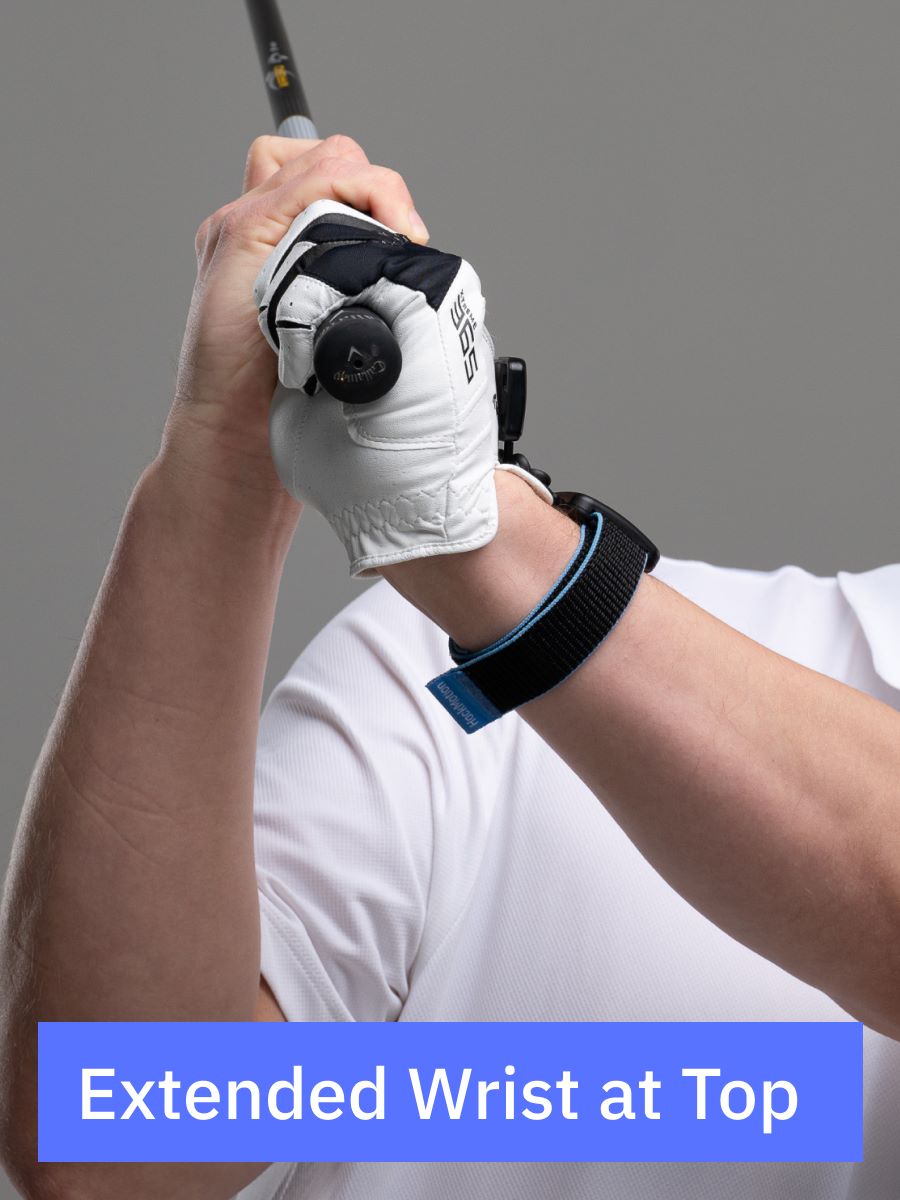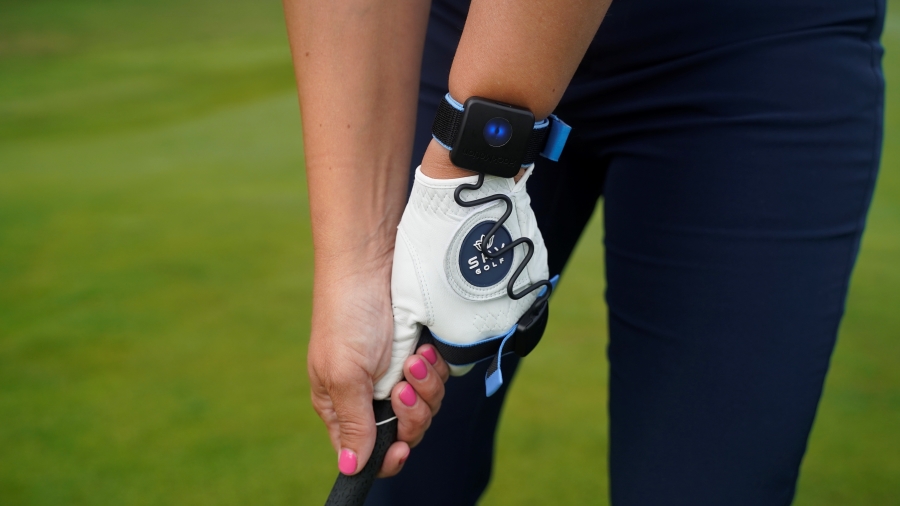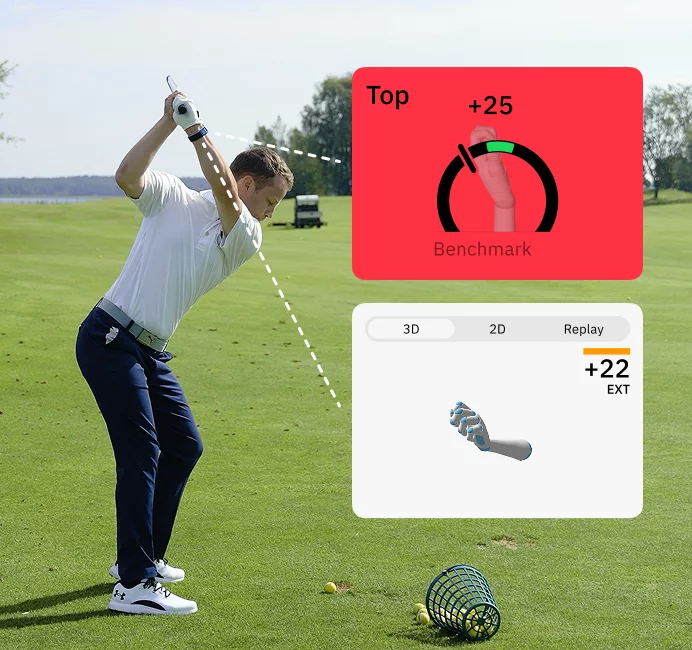HackMotion Insights: 1,000,000 Swings Analyzed and Key Discoveries
With more than 1,000,000 golf swings recorded, we have made in-depth discoveries about the golf swing, wrist action, ball flight control, and more.
Let’s take a look at what HackMotion has taught us so you can get started on perfecting your golf swing.
Key Takeaways
If you don’t have time to read through our in-depth discoveries, here are a few things to understand about how HackMotion continues to make it easier to get better at golf.
- Flipping the wrists is still one of the most common mistakes of the amateur handicap golfer; wrist flipping happens well before impact, and it costs you distance, accuracy, and consistency; luckily, HackMotion can fix it.
- Extension at the top of the backswing (wrist cupping) is almost always about 10 degrees more for amateurs than it is for professionals; at impact, we see that same 10-degree difference.
- Decreasing extension at impact and finding your optimal launch angle will improve total distance, regardless of the golf club that you have in your hand.
Contents
Flipping Has to Go
According to our latest analysis, flipping remains a major problem, especially for mid- and high-handicap golfers, with over 56% of players in the 10–25 and 25+ handicap ranges showing flipping patterns.
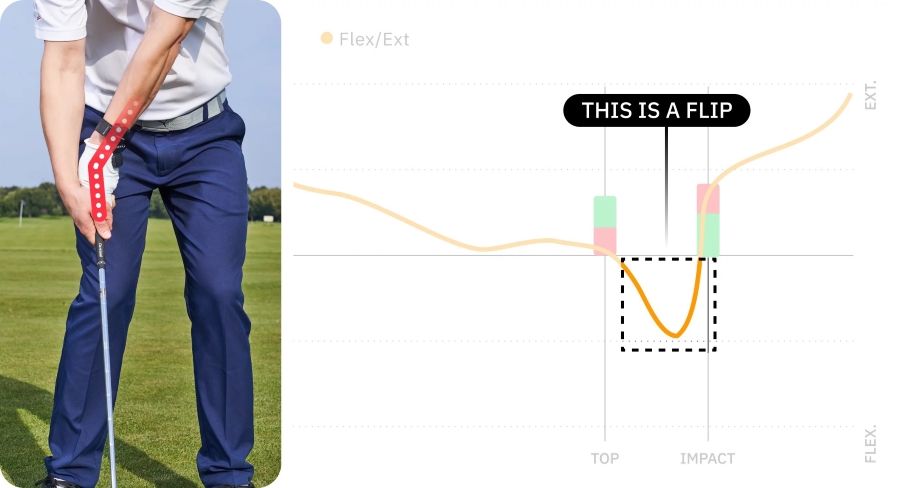
If you want consistency in your game, there is no good way to time a flip. You’ll simply have to learn how not to do it.
One valuable insight here is that professional golfers are starting to move towards extension in their wrists about .02 seconds before impact. The amateurs are doing this extension move at .07 seconds before impact.
The difference in these .05 seconds is the difference between a compressed golf ball and a flip.
What Makes it Hard to Stop Flipping?
We also learned that the main reason flipping is so hard to fix is that it is not a conscious move that golfers are making.
Many players can take practice swings with their HackMotion device and not flip at impact.
However, when hitting the ball, the instinct is to flip and hit the ball with a square face.
Luckily, this can be fixed by working on creating a flat left wrist at the top and squaring the clubface sooner. If you wait too long to square the clubface, the only move left is a flip.
Want to finally fix your flipping for good?
Watch our FREE video course on how to stop flipping the wrists at impact and start compressing the ball like a pro. Click below to get started.
Lead Wrist Flexion Patterns Reveal Why Impact is So Difficult
High handicap golfers continue to struggle with achieving the right wrist angles, especially at the top and impact positions.
When we look at lead wrist flexion (the opposite of extension), the gap between amateurs and skilled players becomes even more apparent.
At address, the differences aren’t dramatic. But as the swing progresses, lower handicap golfers maintain better flexion patterns throughout the motion, especially at impact.
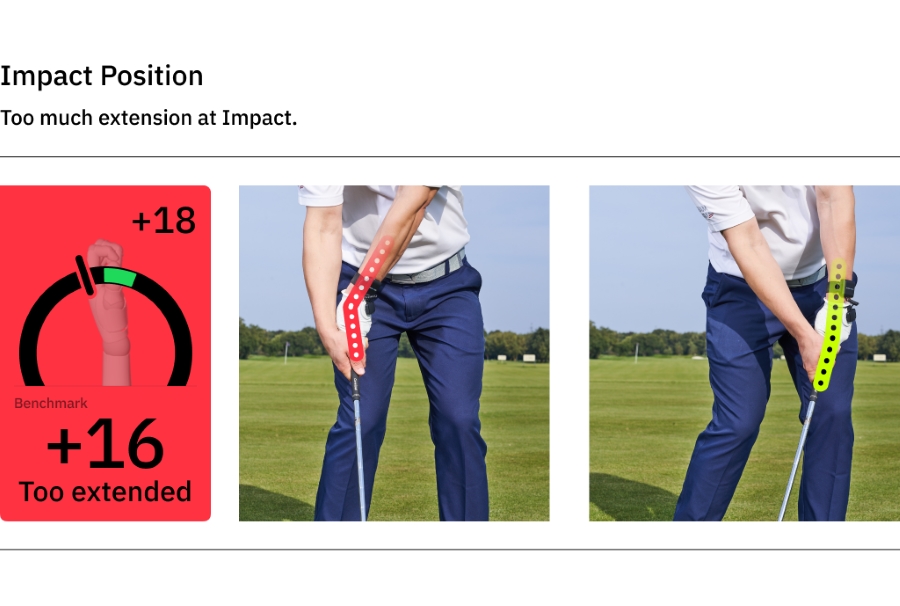
This matters because hitting the ball with a slightly flexed lead wrist (not extended or cupped) is one of the best ways to square the clubface and create compression.
The challenge for higher handicappers is that they simply don’t get close enough to that ideal wrist position. Their deviation from the “Pattern A” benchmark grows as the swing moves toward impact, especially for those with handicaps above 25.
Interestingly, high handicappers finish the swing about 5 degrees farther from optimal flexion at impact than low handicappers. This doesn’t just affect ball flight, it makes squaring the face more difficult and leads to inconsistent contact.
In other words, it’s not just that they aren’t decreasing extension fast enough, it’s that they’re never quite getting into the proper flexion in the first place.
| Handicap | Extension at Address | Extension at Top | Extension at Impact | Change Address to Top | Change Address to Impact |
|---|---|---|---|---|---|
| Less than 10 | 19.3 | 14.5 | 3.6 | -4.8 | -15.6 |
| Between 10 and 25 | 19.6 | 17.0 | 9.0 | -2.5 | -10.5 |
| More than 25 | 18.8 | 24.3 | 10.7 | 5.5 | -8.1 |
Higher Handicappers are Standing Up at Impact
If you watch any great golfer through impact, their body stays stable, and they resist the urge to stand up and hit at the ball. Instead, lower handicap golfers maintain their spine angle and stay in position without uncocking the wrists too much.
When you uncock the wrists too early, you lose power and control in the shots. One of the best ways to check this with the HackMotion is to look at your radial and ulnar deviation numbers throughout your swing.
Work on not allowing the shaft to stand up through impact, keeping the wrists cocked a little longer through the ball, and improving that clubface position to allow you to do this.
| Handicap | Radial at Address | Radial at Top | Radial at Impact | Change to Top | Change to Impact |
|---|---|---|---|---|---|
| Less than 10 | -26.4 | 8.8 | -27.0 | 35.2 | -0.7 |
| Between 10 and 25 | -25.6 | 7.5 | -26.4 | 33.1 | -0.8 |
| More than 25 | -24.9 | 5.6 | -27.2 | 30.5 | -2.2 |
Distance is Impacted by Lead Wrist Extension
The most important benefit that HackMotion has to offer is clubface control. However, as golfers ourselves, we know that distance is always going to be a concern for golfers. This is understandable.
However, we have been lucky enough to discover the fact that you can gain almost 25 yards or more of distance just by changing the amount of extension that you have at impact.
There are a few factors that come into play here, including clubhead speed and launch angle; let’s take a look at this example.
Shot 1: High Launch/High Spin
The first shot is a shot taken by a golfer with a 105 mph club speed and a smash factor (ball speed/club head speed) of 1.5. This shot had a launch angle of 19 degrees and a spin rate of 4500 rpm. After the shot was hit, the total distance of 252 yards.
Shot 2: Lower Launch/ Lower Spin
The second shot takes the same 105 mph club speed and a smash factor of 1.5. However, because of the wrist angles of the player (less extension at impact), the launch angle is 11 degrees, and the spin rate is 2800 rpm. With lower launch and spin, the result was a total distance of 275 yards.
By lowering the launch angle and spin, with a better wrist position at impact, golfers gain almost 25 yards.
Does this Work for Everyone?
We tested this scenario with a large group of golfers. Golf manufacturers have been telling players that hitting the ball high is a good thing, and this has not changed.
However, the initial launch angle of the shot being just a little lower (due to more flexion in the wrist at impact) can get those 25 extra yards of distance you are looking for.
The key here is that your swing speed has to be high enough for you to still gain optimal ball flight. Slower swing speed golfers cannot decrease launch angle too much as they will struggle to even get the golf ball off the ground. However, flipping will decrease your swing speed due to early release, so make sure that the driver’s loft is doing the job, not your wrists.
If you feel like you have good speed, but are not maximizing your distance on the course, work on decreasing extension at impact and adding at least 25 yards to your game.
Most Common Swing Faults (and What They Tell Us)
After analyzing over a million swings, two issues appear across all handicap levels: flipping and casting.
Flipping, as we covered earlier, is the most common fault among amateurs, and it’s not even close. But casting (the early release of the wrists in the downswing) becomes increasingly common as handicaps rise.
Here’s how these faults break down by skill level:
| Handicap | Casting % | Flipping % |
|---|---|---|
| Less than 10 | 12.68% | 52.91% |
| 10 to 25 | 17.93% | 56.68% |
| More than 25 | 22.55% | 56.26% |
These issues often show up without players realizing it, especially under pressure or when hitting a ball vs. making a practice swing.
The built-in HackMotion casting drill can help you learn how to manage your wrist hinge through impact and improve ball striking.
Fix Your Casting with HackMotion
Train to fix casting by generating power with your core and lower body.
HackMotion is More than a Wrist Training Aid
The golf swing has three crucial stages that all golfers need to focus on:
- Address
- Top of the backswing
- Impact
HackMotion provides key data for each of these stages, helping to make your golf game more consistent, square your clubface angles, and lower your scores.
It assists both high and low handicappers in understanding and feeling where their swing needs improvement. Combining data and feel is a powerful tool for elevating your game.
HackMotion is like a coach on your wrist. It identifies your swing faults using data and provides drills and feedback so you can improve faster.
Final Thoughts
With these insights, you can now head out to the driving range and start working on these areas of your game. Check to see if you are flipping or if you could use a few more yards in your golf game, and then use your HackMotion to get your handicap lowered.

